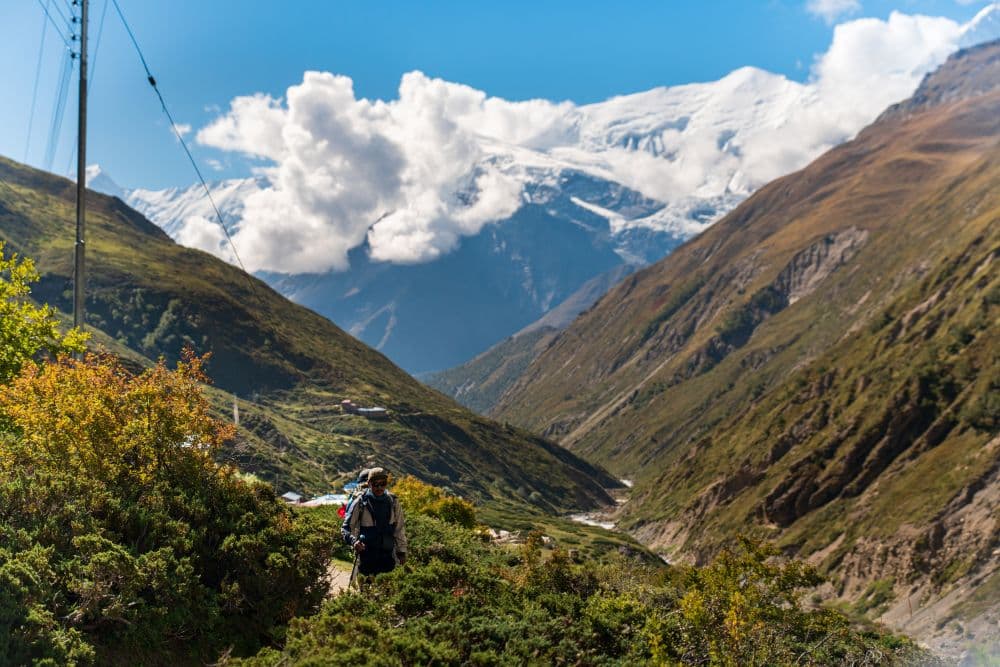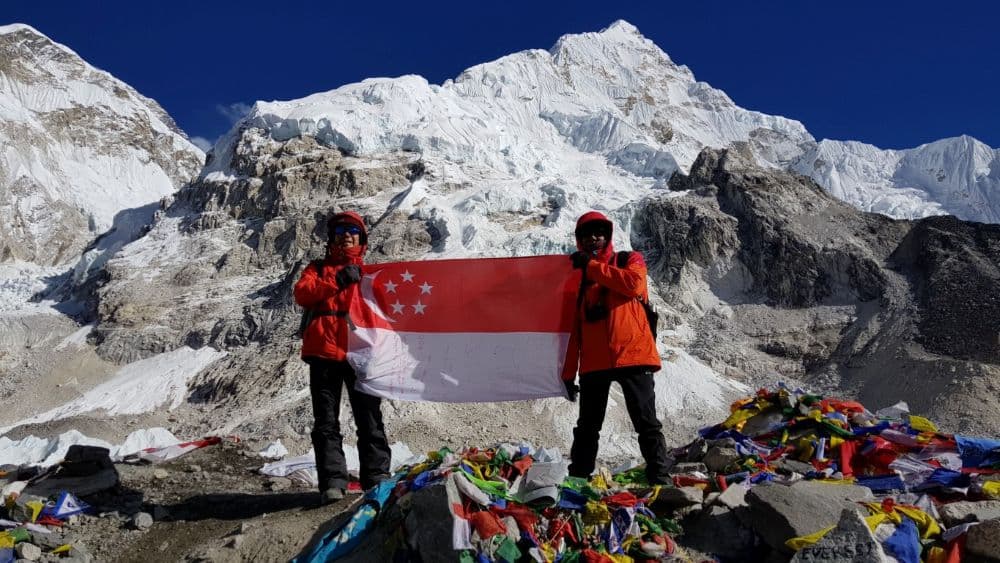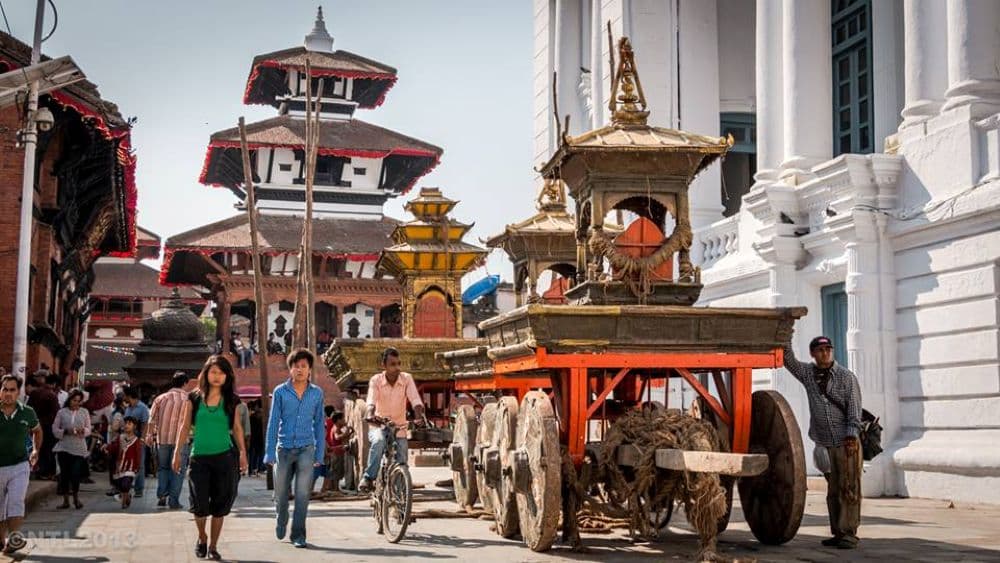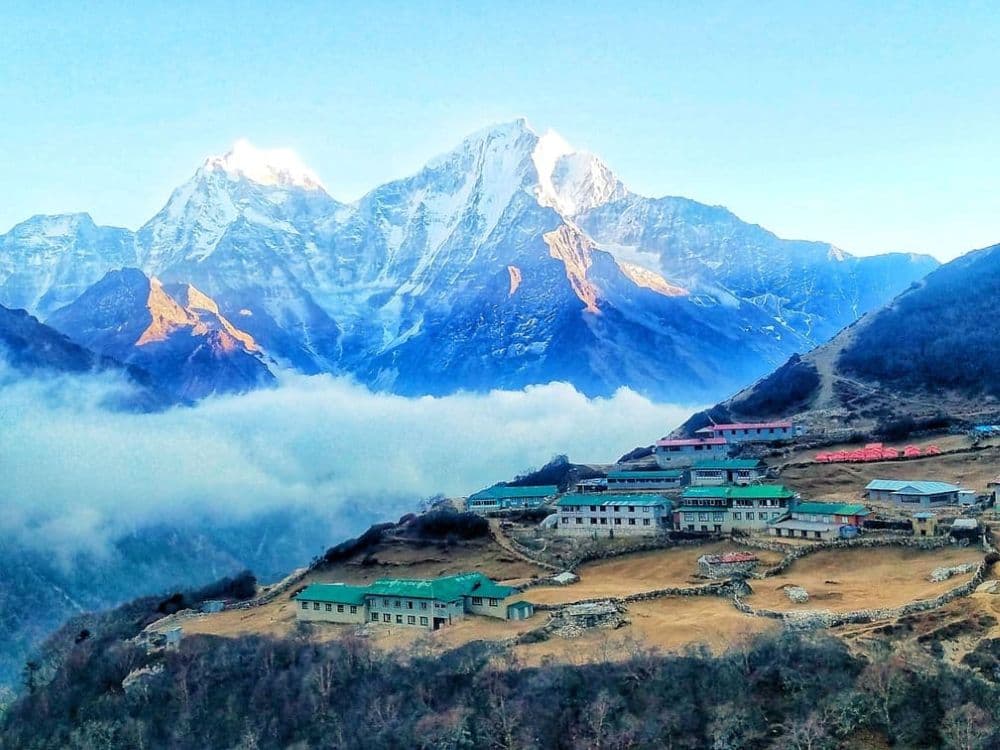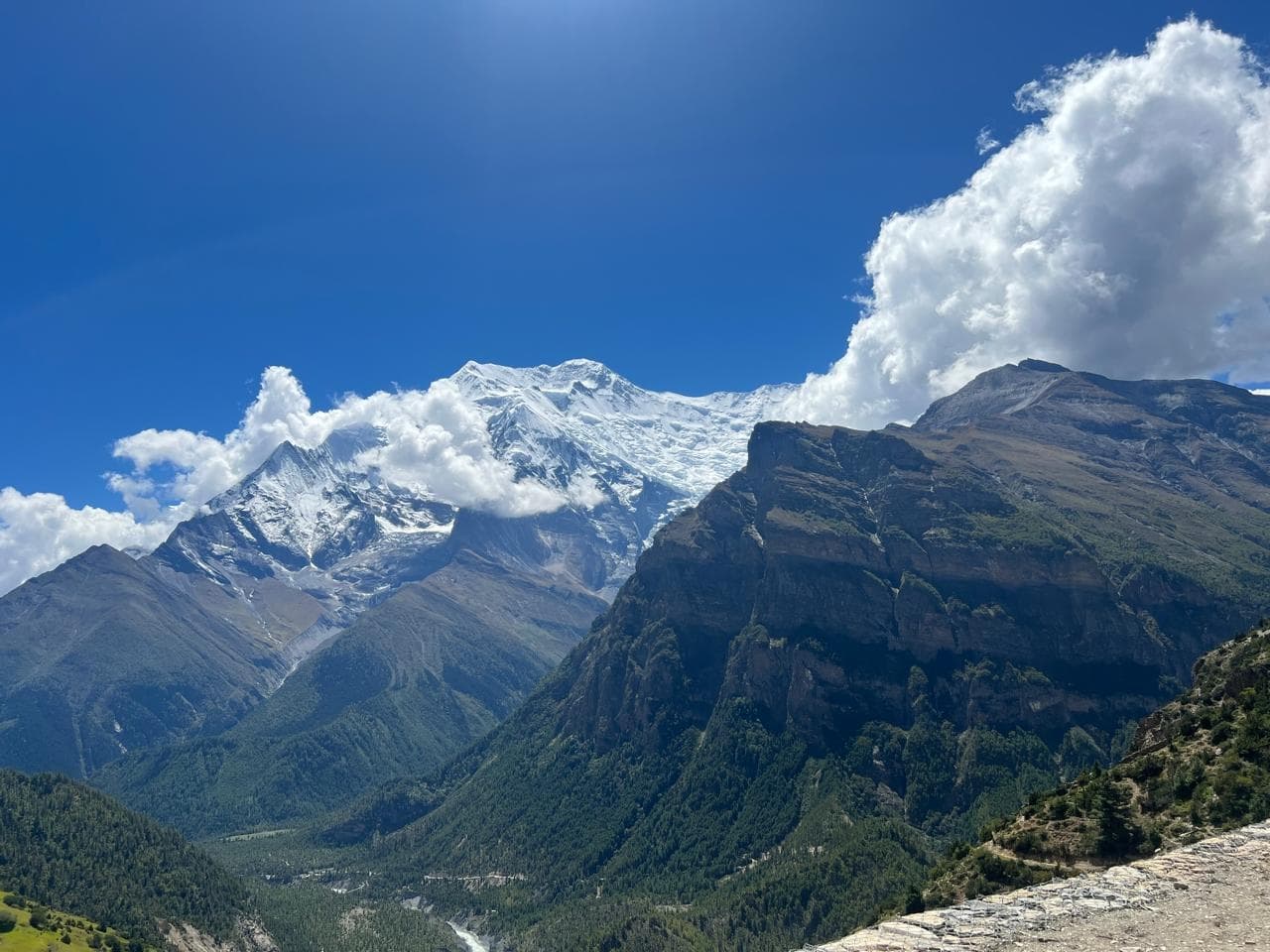
The Ultimate Packing List for Women While Trekking in Nepal
The right packing list for women is a must while trekking in Nepal since weather conditions and various landscapes require thorough preparation. Ranging from the chilly heights of Everest to the fertile trails of Annapurna and the rugged passes of Manaslu, all the treks present a different challenge, which can be eased with the proper gear and equipment. Proper packing is not only a guarantee of physical comfort but also guarantees safety and respect towards the local culture. It enables the trekkers to experience Nepal as a whole with its striking beauty and unique traditions.
Even if you are prepared with good stamina, a map, and all logistics, you won’t be fully prepared until you have a solid packing list. So, this guide aims to aid all the female trekkers who are planning to embark on the adventure of various treks in Nepal. So, stay with us till the end if you want warm, safe, and prepared treks.
Understanding Trekking in Nepal
When you are planning to trek in Nepal, your trekking essentials list can depend on the season and terrain. Spring and autumn can be pleasant, while winter brings cold, and the monsoon brings heavy rainfall. Moreover, altitude from the lower Terai to the Himalayan region also varies in a great range. Additionally, a trekking vacation packing list for women focuses more on hygiene and safety. Hence, smart, lightweight packing is essential for comfort, mobility, and managing changing weather conditions on multi-day treks.
Clothing Essentials for a Packing List for Women
You will be walking at different altitudes while enjoying the allure of the seasons. So, the trekking packing list for women in terms of clothing should be versatile, layered, and adaptable to the changing weather.
Base Layer
You have to pack good-quality moisture-wicking t-shirts and thermal tops and bottoms. The base layers should be of synthetic or merino wool so that they dry quickly and wick moisture away. Likewise, a good sports bra helps a lot during long hours of trekking. So don’t forget to pack breathable and quick-dry sports bras and underwear.
Mid Layers
The purpose of the mid-layer is to trap body heat but still be breathable. You can pack a fleece jacket, hoodie, or pullover to keep yourself warm. As you are climbing to a higher altitude, temperatures start to drop, so a down jacket can be very handy. It can be packed down into a small size without consuming a lot of space in your backpack. Fleece and down make this a combo that you can be warm during chilly evenings and mornings.
Outerwear
Outer layers are essential in the mountains of Nepal, where the weather is prone to change at any time. A breathable membrane of a waterproof and windproof jacket is a must in case of rain, wind, or even some unforeseen snow. Such characteristics as closed seams and an adjustable hood are more resistant to use in more severe conditions. Combining this with light, packable rainproof trousers will keep you dry during the downpours, particularly during the monsoons or at the high passes, where the weather cannot be predicted.
Head, Neck, and Hand Protection
In the Himalayas, it is important to have your extremities covered. A cozy wool or fleece beanie is a good way of keeping warm on cold evenings, and a sun hat or cap is needed to protect against the high UV radiation in the mountains. One of the most versatile things is a buff or neck gaiter. It can protect against dust on the trail, against cold winds at the high passes, and it may be used as a face covering in the tea houses during chilly evenings. For hands, pack thin liner gloves for mild temperatures and insulated waterproof gloves for hiking at higher altitudes or at low temperatures in winter.
Footwear
Treks in Nepal are not just a random stroll around the park. You will be walking for several hours for many days in difficult landscapes. So, comfortable and sturdy footwear is a must in a travel packing list for women.
Hiking Boots
While coming for trekking in Nepal, you must pack sturdy and comfortable hiking boots. These boots should be waterproof and breathable. As you will be walking on uneven trails with many uphill and downhill sections, it is important that these boots give you strong ankle support.
Sandals
You cannot keep wearing your boots all day. So, during the stay at the teahouses, you can wear sandals or slippers and give your legs a break. So, don’t forget to pack sandals for the tea houses.
Socks
Socks are important in ensuring that your feet are kept warm, dry, and free of blisters. Woolen or synthetic blend trekking socks are very comfortable and they keep the feet dry, thus being used in long treks. Take four to five pairs to be able to rotate them and wash. Thin liner socks also help to reduce friction and blisters. It is important to wear socks while sleeping, but make sure to keep a pair of dry and clean socks to wear them while sleeping at night.
Gears and Equipment
The trekking gear helps women stay safe, have a comfortable journey, and ease out the difficulties of trekking.
Duffle Bag
This is the primary bag where you will keep all your gear, equipment, and clothing. This is normally the bag that a porter will carry with him. Hence, your duffel bag should be durable and water-resistant with comfortable straps to carry on. We will offer you a duffle bag if you are traveling with us.
Daypack
This is the small backpack that you will carry yourself during the trek. You won't have access to the duffle bag while trekking, so you should keep all your essentials and valuable things in this backpack. It needs to have soft padded straps and a hip belt to relieve the burden on your shoulders. When choosing one that has more than one compartment, then it is easier to arrange your necessities. You can bring a rain cover to save your stuff when there is a sudden downpour.
Sleeping Bag
A sleeping bag is necessary for trekking since tea houses tend to supply only the basic bedding. The nights at high altitude treks like the Everest Base Camp trek with Gokyo and Manaslu Circuit Trek can be extremely cold; therefore, a warm sleeping bag with a range of –10°C to –20°C is essential. While choosing the sleeping bag, you should be considerate about the weight and packing too. It is always a good idea to carry a sleeping bag liner, which can serve as an addition of warmth as well as keep your bag clean.
Reusable Water Bottle
You should hydrate throughout the trek by drinking at least 3-4 litres of water daily. However, bottled water can be expensive and create plastic waste. So, carrying durable and lightweight water bottles is a wonderful idea. You can refill the water at teahouses. If you think water is not safe, you can bring water purification tablets and filters. Also, bringing electrolytes can be optional, but it will definitely boost hydration.
Trekking Poles
Trekking poles really come in handy on the Nepal rocky and hilly paths in Nepal. They ensure stability on uphill climbing and alleviate pressure on your knees during downhill climbing. The best poles are adjustable ones, since at times you can shorten them or make them longer depending on the terrain. Aluminum or carbon poles are very light and are easy to carry around, and some can even be folded to fit in your bag. It is possible to use trekking poles to reduce long walks of hiking and to reduce the chances of slipping or being injured.
Snow Gaiters and Crampons(During Winter Treks )
Snow gaiters and crampons are also very handy in winter or high-altitude treks. Gaiters are waterproof covers that are worn over boots to keep out snow.. They also keep your feet dry and warm, particularly when walking in deep snow. Crampons are spikes that are attached to your shoes to provide more stability on slippery or icy paths. It will help you while walking the icy high passes like Thorung La Pass during the Annapurna Circuit Trek in winter or early spring.
Women’s Personal Essentials
The packing list for women is not just limited to clothing and gear. Personal essentials play a vital role throughout the trek.
Menstrual Hygiene Products
The trekking packing list for women should have menstrual hygiene products like pads, tampons, or menstrual cups. You should track your periods and make preparations for a more comfortable trekking experience.
Toiletries
Teahouses in Nepal will offer you basic to moderate facilities. So, it is better to be equipped with toiletries according to your needs. Bring toothpaste, soap, and other essentials. As you will be walking for long hours, you can be sweaty, but bathing can not be an option. So wet wipes will help you in wiping your body. Likewise, pack sanitizers, dry wipes, toilet paper, quick-dry towels, etc. Keeping toiletries lightweight and practical makes hygiene easier while staying respectful of the natural surroundings.
Skincare
Trekking doesn't mean you should neglect your skin. So, bring some of the basic skin care, such as sunscreen, lip balm, and moisturizer, while making a trekking female packing list. Lip balm and sunscreen with SPF will help in protecting your skin from the UV rays of the sun, while moisturiser will help your skin be moisturised and keep away dryness.
Hair care
During treks, a shower may not be accessible, and in this case, dry shampoo will be a convenient option. It assists in making hair stay fresher and less greasy between washes. It can get really uncomfortable when your hair keeps coming to your face when you are just trying to walk properly on rugged terrain. It is also important to carry sufficient hair ties since they get lost easily and are necessary to hold back hair while hiking. The headbands are also effective in controlling the flyaway hair, and they also keep the sweat off your face.
Lightweight Makeup or No-Makeup Trekking Considerations
Makeup is optional while trekking, and many women prefer going without it for convenience. The focus is usually on skincare rather than makeup since harsh conditions can make skin dry and sensitive. If you do want to carry makeup, keep it very minimal—perhaps a tinted moisturizer with SPF, a small compact, and a lip tint. Prioritizing comfort over appearance is best, as trekking days are long and tiring. Natural beauty and healthy skin always shine brightest on the trail.
Health & Safety Items
Staying healthy and safe is a vital part of trekking in Nepal. Therefore, you must be prepared with medications, remedies, etc, to keep yourself safe.
First Aid Kit
A personal first aid kit is essential when embarking on any treks in Nepal. You can make your own personalised kit with band-aids, blister plasters, pain relievers, antiseptic cream, and other medications. With such items, you will be ready to deal with small injuries, blisters, or a headache, and be safe and comfortable walking in remote areas of Nepal.
Altitude Sickness Medications
Treks on high elevations usually lead to high altitude sickness symptoms like headaches, nausea, shortness of breath, etc. Hence, medications such as Diamox could alleviate signs of altitude sickness. These must always be accompanied by the knowledge of how to acclimatize properly. Prevention, rest, and awareness are the most important components, but medication is an added precaution.
Prescribed Medications
If you have any medications prescribed by your doctors, then you must bring those medications and take them at the prescribed time. Likewise, you can bring the prescription and buy it here in Nepal, too.
Other Items
Wondering what other items should be part of the vacation trekking packing list for women?
Sunglasses
At elevation, the UV rays of the sun are way stronger, and snow may increase glare. Snow blindness and eye strain are avoided through a good pair of UV-protected sunglasses. Wraparound designs will be ideal because they prevent the entry of sunlight in every direction. Wearing eye protection is the guarantee of comfortable and safe trekking in the mountains with bright sunlight.
Head Lamp with Extra Batteries
There may be circumstances when you have to start your trek early in the morning, or your trek for the day ends quite late. For instance, during the Everest Base Camp Trek, you will start the hike early in the morning to witness the sunrise from Kala Patthar. So, a head lamp helps to walk more confidently on the dark trails. Likewise, don't forget to bring extra batteries for the headlamp.
Adapter
There can be various plug types in the teahouses. So, bringing the universal adapter helps to charge the electronic devices no matter the plug type.
Ziplock Bags
Carrying ziplock bags helps you to store your electronics and other essential documents in case of heavy rain.
Charger and Power Bank
Your electronics, like cameras and mobile phones, can run out of battery. So, don't forget to pack chargers and power banks to charge your electronics.
Essential Documents
It is important to carry the necessary documents in order to have a smooth trekking experience in Nepal. It will ensure that you do not get into legal trouble, and have easy access as you explore the remote areas of the Himalayas.
Valid Passport and Visa
For trekking in Nepal, you should have a valid passport and a valid visa. You can get a visa on arrival or obtain a visa from embassies before arrival in Nepal.
Travel Insurance
For trekking in Nepal, you need to be insured with travel insurance. So, make sure to be insured with one and bring the necessary documents like insurance number, contact no. of the insurer, etc.
Trekking Permits
For trekking in Nepal, you should obtain the trekking permits like the TIMS card, restricted area permits, conservation area permits, etc. Hence, the travel packing list of women for trekking should have trekking permits in both physical and digital form.
Optional
These items are not essential but can definitely make your experience more wonderful.
Snacks
You can bring nuts, protein bars, dried fruits, etc, to munch on the trails.
Books
Bringing books or an e-reader will help you relax at the tea houses during the acclimatization days.
Journal
A journal helps you record your trekking experiences, thoughts, and memories. Writing each day allows you to capture the journey in a personal and meaningful way.
Hydration Bladder
A hydration bladder or water bottle helps you stay hydrated without stopping frequently. It allows easy access to water while trekking, which is essential at high altitudes.
The trekking in Nepal is an experience to remember, yet it is important to be prepared- especially for the women. When making the best packing list for women for trekking, including appropriate clothing, gear, hygiene items, and safety items, provides comfort, health, and confidence on the trail. Through good planning and being organized by packing for your first trek or repeated trek in Nepal, you are able to concentrate on the spectacular scenery, culture, and the special challenges of Himalayan trekking.


